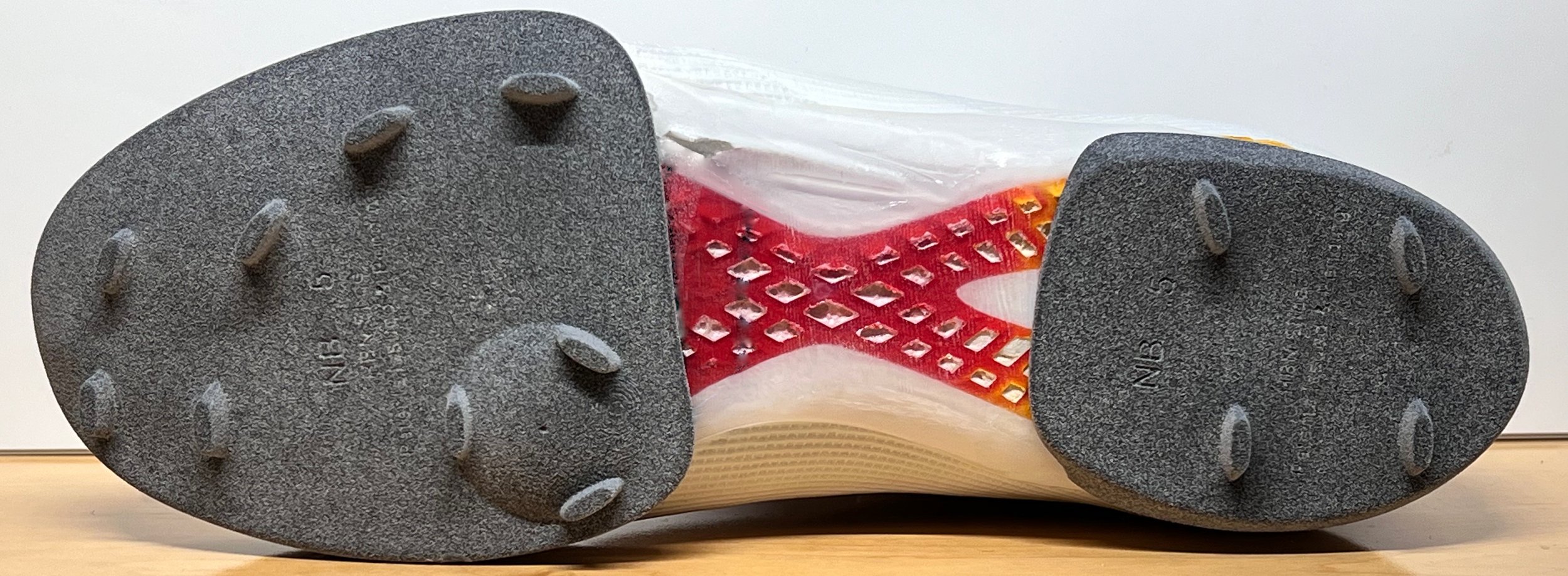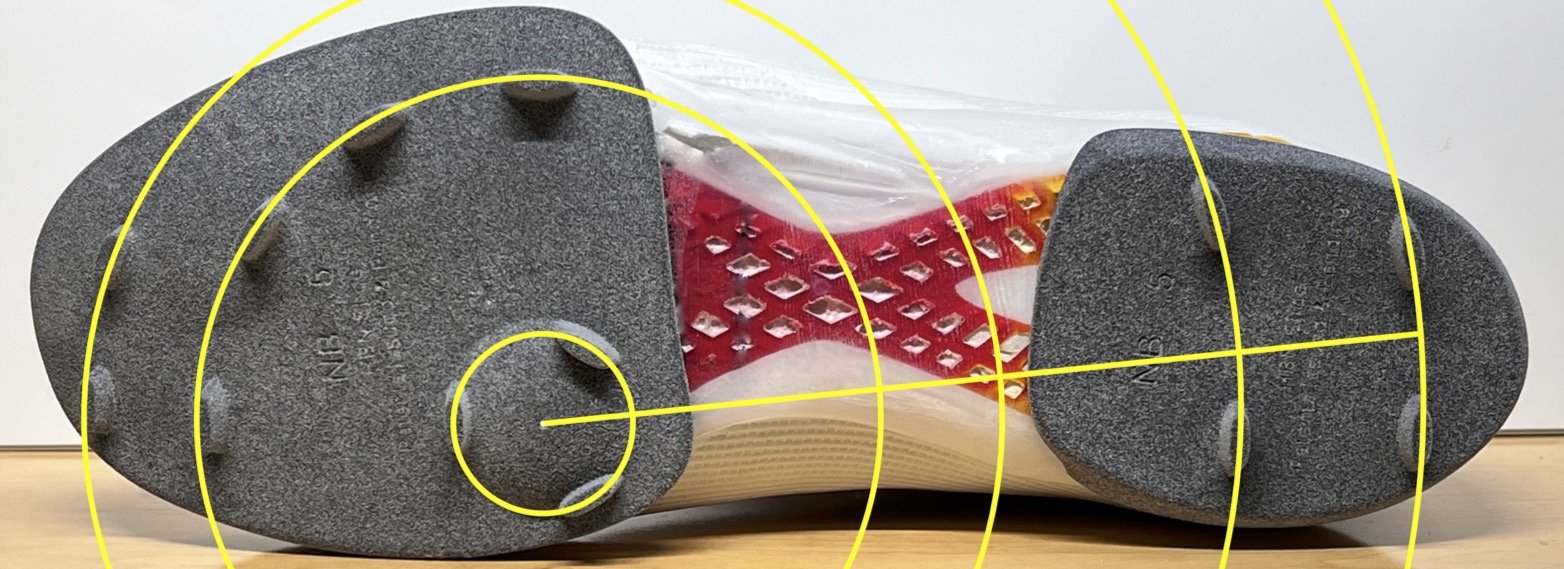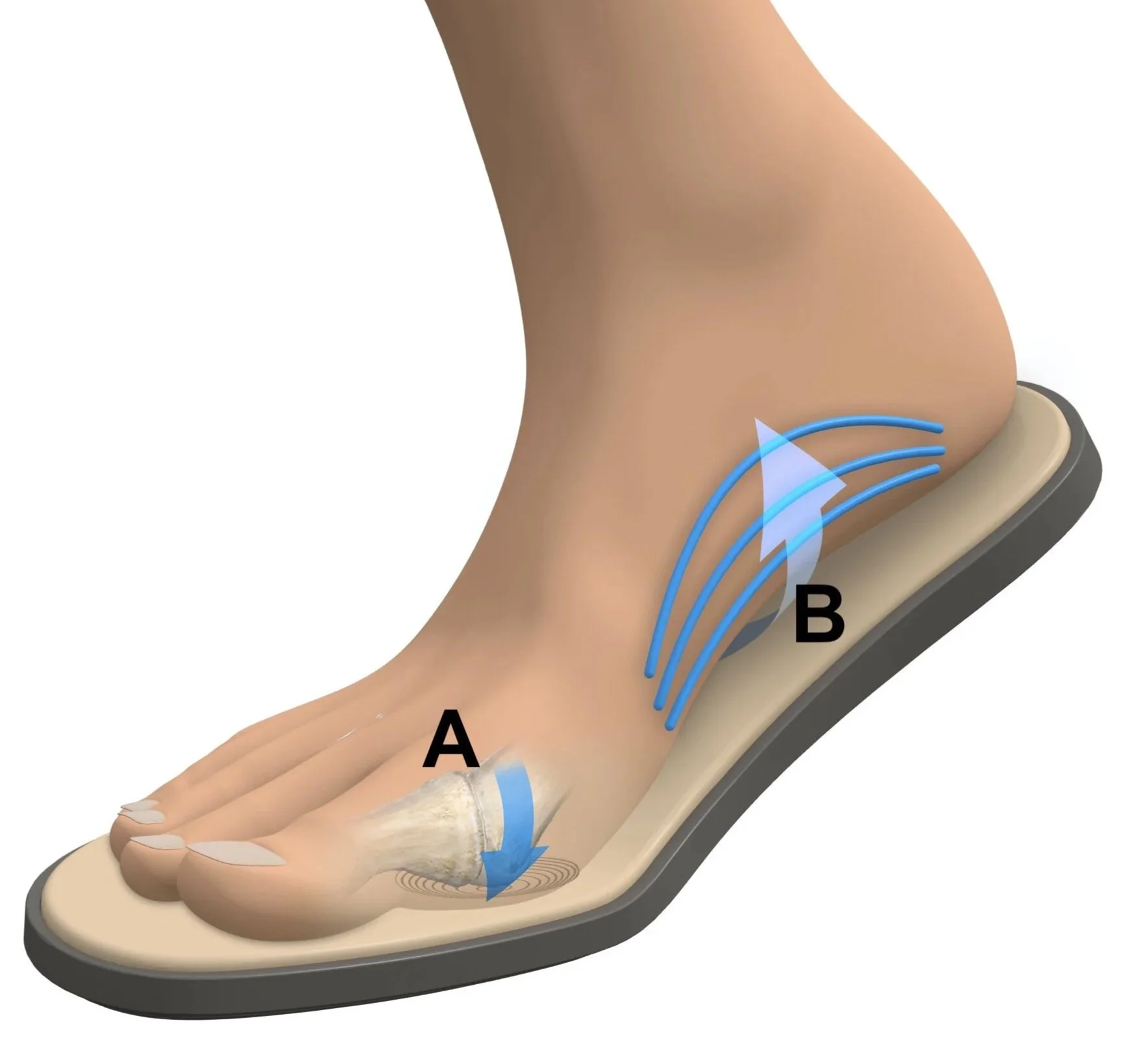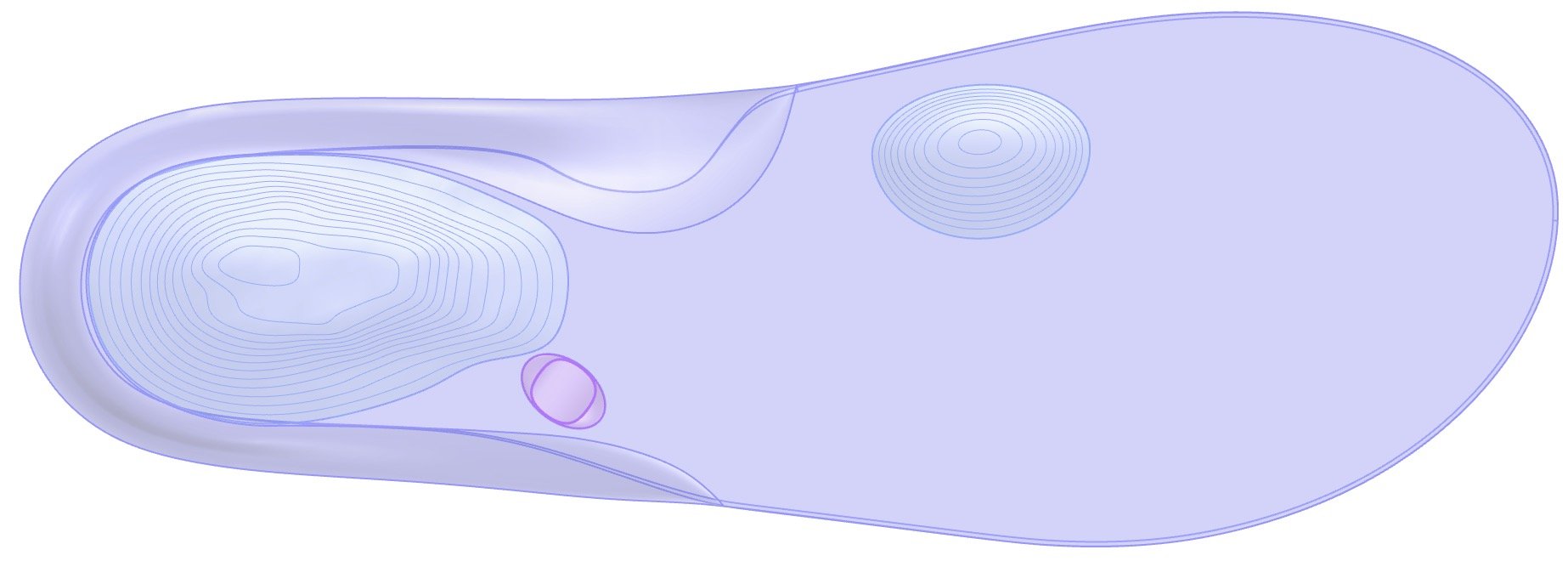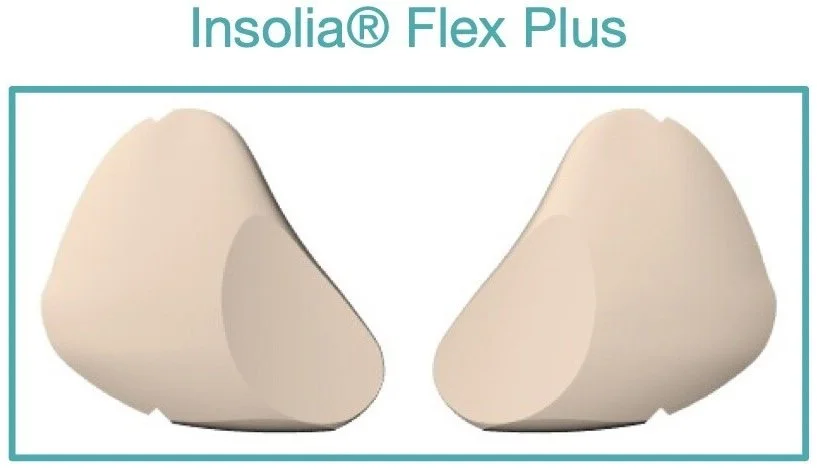Insolia® Intellectual Property
Protecting Innovation Through Comprehensive Patent Coverage
Insolia Technologies are biomechanically-based footwear innovations that optimize foot position, alignment, and flexibility. Each technology is grounded in gait science and foot anatomy, resulting in patented designs that enhance comfort and reduce injury risk.
We obtain one or more utility patents on all Insolia Products and Technologies we bring to market. We currently hold 27 Utility Patents and 4 Design Patents (31 total) in the United States, including their international counterparts in Europe, China, Japan, and other key markets. Another 15 utility patents are pending.
All customers receive comprehensive IP protection through our licensing agreements..
Finally, we have a global network of local patent attorneys who assist us and our customers in the event of any potential infringement.
Core Technologies
We adapt our patented technologies for a wide range of products. Global manufacturers implement Insolia Flex and Insolia Cradle across all footwear categories, from athletic shoes to high heels and sandals.
Over 60 million pairs of footwear with Insolia Technologies have been sold.
Exclusive licensing of Insolia Technologies provides manufacturers with protected differentiation in competitive markets.
Patents Issued & Pending
Insolia Field - Cleated Athletic Footwear
Insolia Field technology represents our latest innovation in sports injury prevention, specifically addressing the epidemic of non-contact ACL injuries in cleated footwear.
Our patented approach revolutionizes cleat design by biomechanically optimizing stud placement, which preserves natural foot motion while maintaining traction. Unlike conventional cleats that restrict the Great Toe Joint, Insolia Field enables proper joint flexion during high-force athletic maneuvers.
Key Innovations:
Single center of rotation aligned with the foot's natural pivot point
Studs positioned around, not under, the Great Toe Joint
Flexible zone in the outsole for natural foot bending
Air gap protection prevents upward pressure on critical joints
Development Status:
Functional prototypes completed. Biomechanical testing validated. Seeking manufacturing partners for commercialization.
The first Insolia Cleat Prototype
For complete technical specifications and biomechanical data, see our Insolia Field homepage
Insolia Flex, Flex Plus, and Flex Max Technolgies
Our patented Flex technologies enhance natural foot motion by allowing the Great Toe Joint to move freely, triggering the body's natural arch support mechanism.
Core Innovation:
The asymmetric depression under the Great Toe Joint allows it to drop and rotate naturally during walking. This preserves the foot's ability to store and release energy through dynamic arch flexing - unlike fixed arch supports that restrict natural motion.
Insolia Flex Technologies
• Enhanced Flexibility
• Dynamic Arch Support
Proven Benefits - Walking/Athletic Shoes:
40% increase in forefoot comfort scores
10% improvement in walking efficiency (reduced VO2/kg)
Natural, dynamic arch support through the Windlass mechanism (B)
Reduced compensation stress on legs and lower back
Technology Variations:
Insolia Flex - Base technology for enhanced forefoot flexibility
Insolia Flex Plus - Adds metatarsal support and enhanced pressure distribution
Insolia Flex Max - Trim-to-fit insole (one-size-fits-many solution)
Additional Benefits in High Heels (Flex Plus):
Enhanced stability while standing and walking
Better pressure distribution across the forefoot
Reduced burning sensation in the ball of the foot
Insolia Cradle Technology
Insolia Cradle corrects a fundamental oversight in footwear design: while heel cups are symmetrical, the human heel bone (calcaneus) is not. Our patented technology provides the first anatomically-matched heel cup design.
Core Innovation:
Asymmetric heel cup contours that match the natural shape of the calcaneus, with extended medial support to reduce plantar fascia strain.
Insolia Cradle technology shown in a sandal application
Benefits in Walking/Athletic Footwear:
Improved balance and stability platform
Reduced plantar fascia strain through medial arch support
Enhanced standing and movement comfort
Better proprioceptive feedback
Benefits in High Heels:
Enhanced balance during standing and walking
Improved weight distribution
Increased overall comfort
Insolia Flex Max Technology
Insolia Flex Max delivers our patented biomechanical benefits in an affordable,
one-size-fits-many format for the mass market.
Design Innovation:
Polyurethane molded construction for durability and minimal thickness
Hexagonal perforation pattern reduces weight and cost while providing ventilation
Incorporates both Insolia Flex Plus and Insolia Cradle technologies
Trim-to-fit design covers US Men's sizes 8-13 (five trim lines)
Technical Features:
Variable-depth hex perforations optimize flexibility and support zones
Adapted Great Toe Joint depression accommodates six full-size ranges
Ultra-thin heel cup design incorporates modified Insolia Cradle geometry
Maintains biomechanical benefits across the entire size range
Market Position:
Unlike basic cushioning insoles, Flex Max provides measurable biomechanical improvements at a competitive price point for mass retail distribution.
Insolia® Foundation Products
Insolia Foundation represents our core technology platform for OEM manufacturers and brands seeking to incorporate proven biomechanical innovations into their own footwear designs.
Product Applications:
Insoles: Complete drop-in solutions for dress shoes, casual footwear, and athletic shoes
Outsoles: Licensed technology integration for athleisure and performance footwear
Hybrid Solutions: Combined insole/midsole implementations for maximum benefit
Technology Integration Options:
Insolia Flex Only: Enhanced forefoot flexibility and walking efficiency
Insolia Cradle Only: Anatomically correct heel support and stability
Combined Technologies: Maximum biomechanical benefit through both systems
Insolia Foundation Insole for Men’s Dress Shoe
Insolia Foundation Outsole for Athleisure Shoe
Commercial Models:
Direct purchase of manufactured insoles with embedded technology
Patent licensing for in-house outsole/midsole production
Co-development partnerships for custom applications
Target Markets:
Dress shoes, Casual footwear, Athleisure,
Work boots, Athletic shoes.
Insolia Plantar Fasciitis Relief Technology
Our latest patented innovation specifically addresses plantar fasciitis, one of the most common causes of heel pain affecting millions worldwide.
Insolia Plantar Fasciitis Insole showing three integrated technologies: optimized Cradle heel cup, 45-degree Cuboid Pad, and Flex depression under Great Toe Joint
Development Background: Consumer feedback from our "Goldie Lou" sandal users indicated significant plantar fasciitis pain relief, inspiring targeted optimization of our technologies for this specific condition.
Three-Technology Integration:
Optimized Insolia Cradle: Enhanced medial extension specifically calibrated to reduce plantar fascia tension
Novel Cuboid Pad: Patented support with groove aligned to the peroneus longus tendon axis, providing lateral column stability
Insolia Flex: Enables natural Great Toe Joint motion to reduce compensatory stress
Clinical Benefits:
Reduced tension on the plantar fascia during weight-bearing
Improved load distribution across the foot
Enhanced midfoot stability through cuboid support
Decreased morning pain, as typical of plantar fasciitis
Target Market: Therapeutic insoles, comfort footwear, recovery sandals.
Insolia Components for OEM Use
Insolia offers proven biomechanical components for direct integration into manufacturers' footwear designs, available through licensing or direct supply agreements.
Implementation Support:
Technical integration assistance
Manufacturing process consultation
Co-development for custom applications
Full IP protection under licensing agreements
Insolia Flex Plus Component
Advanced forefoot flexibility with integrated metatarsal support
Ideal for comfort, athletic, and therapeutic footwear
Insolia Heels I-4 Component
Complete high-heel comfort system
Combines Insolia Cradle and Flex Plus technologies
Proven 25% weight redistribution from forefoot to heel
Four sizes cover US women's 4-12
Summary
Technical Foundation: Twenty-five years of biomechanical research have produced a portfolio of technologies addressing specific footwear problems. Each solution is based on gait analysis data and validated through independent laboratory testing.
Manufacturing Integration: All Insolia technologies work with standard footwear production methods. Implementation requires no special equipment or significant process changes. This approach has facilitated adoption in over 60 million pairs globally.
Intellectual Property Portfolio: 31 issued patents and 15 pending applications across the United States, Europe, and Asia. Patent coverage extends through 2038, providing long-term protection for licensing partners.
Application Range: Technologies proven effective across all footwear categories: athletic, casual, dress, and therapeutic.
Technical Support: HBN Shoe provides implementation guidance, manufacturing consultation, and ongoing technical assistance to ensure the successful integration of licensed technologies.
For licensing inquiries, please contact us.


